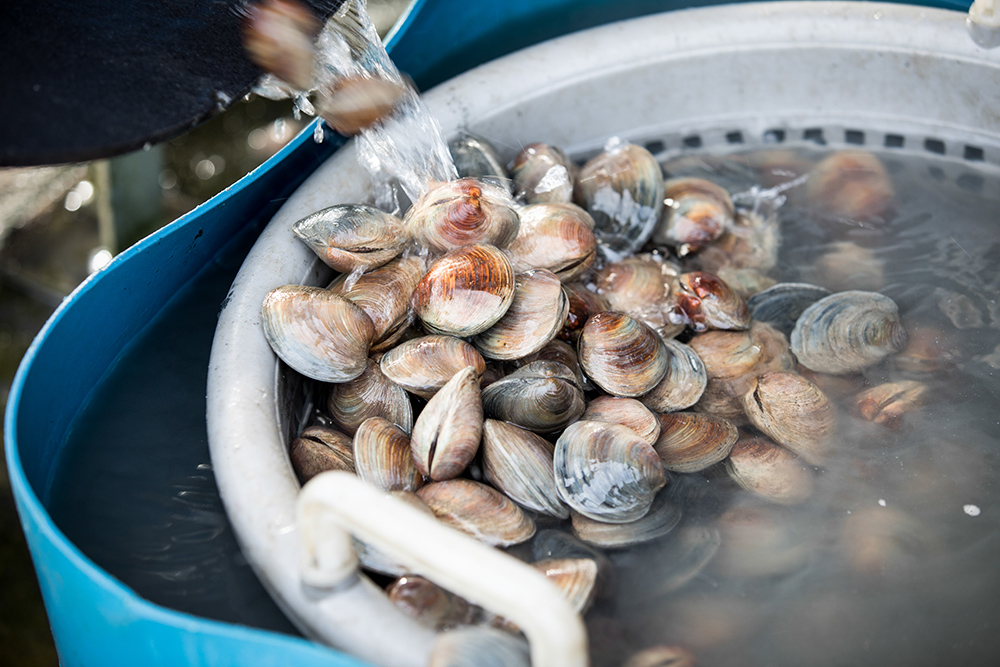By Gary L. Wade
University of Georgia
First, make sure they have a generous supply of mulch over their roots. Use 3 to 5 inches of mulch to help prevent evaporation and hold moisture in the soil.
Fine-textured mulches, such as pine straw, pine bark mininuggets and shredded hardwood mulch, conserve moisture better than coarse-textured mulches. Mulch as large an area under the plant as you can. The roots of established woody ornamentals extend two to three times the canopy spread.
Avoid fertilizing plants during times of watering restrictions. Fertilizers stimulate tender new growth that has a high demand for water. They're also, chemically, salts. They can dehydrate roots and make drought stress even worse.
Set priorities
Concentrate watering selectively on plants that show signs of moisture stress. Some plants will wilt, while others will turn blue-green. Still others will show marginal leaf scorching, or entire branches may die back.Plants like dogwood, azaleas, hydrangeas, viburnums and Japanese maples are among the first trees and shrubs to show moisture stress in the landscape. So when you can water, attend to these plants first. Give priority, too, to trees and shrubs planted within the past four months.
Most healthy, well-established trees and shrubs, like oaks, pines, junipers and hollies, have extensive roots that find water in the soil. They can survive weeks without extra water.
Kindest cuts
If wilting or dieback becomes severe, you may have to cut back plants. With fewer leaves demanding water, the plants can do a better job of conserving their internal moisture.I recently cut back a Shasta viburnum and oakleaf hydrangea in my landscape within 10 inches of the ground because they were reaching the permanent wilting point, and I couldn't meet their daily water needs. These plants will thank me later when the rains return and abundant new growth emerges.
When you can water, use a handheld hose or sprinkling can to direct water to the roots. Give the water time to sink into the soil, then water again slowly. Drip irrigation or ooze hose are other good ways to water slowly. Let the water penetrate the ground and not run off.
Annual and perennial plants have shallow roots and are among the first landscape plants to show moisture stress. If daily wilting becomes progressively worse and you can't meet their water needs, cut them back to half their size to help them conserve moisture. Make sure they're well mulched, too.
Move container plants to shaded areas to help them conserve moisture. And add a layer of mulch to the pots' surface to prevent evaporative water loss.
Night shift
Water at night, between 9 p.m. and 9 a.m. The reason watering is prohibited between 10 a.m. and 4 p.m. is not just to conserve water during peak use. As much as half of the water you apply to your landscape during the day is lost to evaporation. It does the plants little good. Watering at night time won't encourage diseases, either, since the foliage is usually wet anyway from the dew.Remember that annuals can always be replaced. When you have to decide between having flowers and having water for cooking, bathing or cleaning, let the flowers go.
When times get tough, though, gardeners get creative. If you know a good water-saving technique, pass it along to your neighbor. Water is a resource we can't live without, so make every drop count.
More information on water-wise landscaping techniques is in these University of Georgia Cooperative Extension publications on the Web:
- Http://pubs.caes.uga.edu/caespubs/pubcd/B1073.htm
- Http://pubs.caes.uga.edu/caespubs/horticulture/xeriscape.pdf
- Http://pubs.caes.uga.edu/caespubs/horticulture/Drought.html






